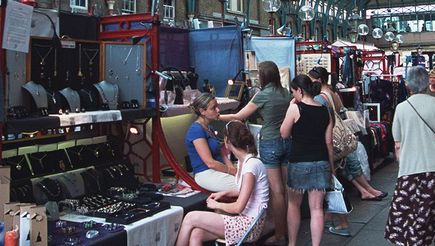When you start a business these days, there's a lot of pressure to have an online presence. For high-tech businesses, that makes a lot of sense. But does an independent hairdresser or window cleaner really need a large Twitter following and a website with all the bells and whistles?
Sometimes it's best to have the courage to follow your own path. For some small businesses, that might mean steering clear of digital marketing and investing in the tried-and-tested methods of advertising, from handing out flyers to placing a notice in the post office. Here's a look at the advantages and disadvantages of online and offline marketing.
When the old ways are the best
It's worth remembering that 10% of households in the UK still don't have internet access. But the notice board in the local post office, shop or pub is accessible to everyone. It's also hard to beat when it comes to targeting your advertising locally. Pick your place – a community centre with an older demographic is a good place to advertise gardening. A leisure centre where busy professionals hang out may be better for dog walking services.
It pays to look professional, so think about what your ad looks like. An online print company can produce a batch of business cards for a reasonable cost. Supermarkets often have a business card dispenser behind the checkouts – speak to customer services about displaying yours.
If your business is offline, then your advertising probably should be too. Nothing is as effective at getting people through the door of your business as newspaper inserts. A MORI survey found that 82% of people said they had taken action after seeing a newspaper insert. By contrast, fewer than 1% of people reading newspapers online click the digital ads.
Print advertising may also be more memorable. A Norwegian study found that readers had better recall of things that they had seen in print rather than on screen. So if you want to make a real impression, paper may be the best choice.
Easy ways into modern marketing
The internet offers access to a vast audience and there are plenty of easy and cheap ways for small businesses to engage. You can be up and running in moments, with no waiting for print deadlines, and you'll often be able to get live feedback on how many people see your ad and respond.
Online classified platform, Gumtree, brings the small ad up to date. It has a services page, where small businesses are listed by type and geographical region, and claims to reach 33% of the UK population. Local newspapers are also able to combine a hard copy advert with an online one.
Know your demographic. Do you have a cutting-edge hairdressing salon, or are your customers after a weekly shampoo and set? If the latter, you can still get away with the post office noticeboard. If you’re aiming for a younger audience, try an online platform. Treatwell is a beauty bookings platform that connects customers and salons. Customers can search salons by area and afterwards can review their experience, TripAdvisor-style.
For a free and easy introduction to online marketing, set up a business page on Facebook. Ask your social Facebook friends to like and share your new page to give your network a head start. You can then use Facebook's advertising tools to target your message: want to find the pet owners in your area? You can.
One of the many advantages of being a small local business is knowing your demographic. Chat to a cross-section of your regular and new customers: would they and their friends be more likely to pick up a flyer or log into Gumtree?
However, as none of these marketing methods cost a fortune, what have you got to lose by trying a new approach? Ditch Twitter for a week and try a retro ad in the post office. Spend a rainy Sunday setting up a Facebook page for your business. It could open up a whole new (or old) world.
It's easier to focus on build a name for business when you know that you're protected from unexpected surprises.






